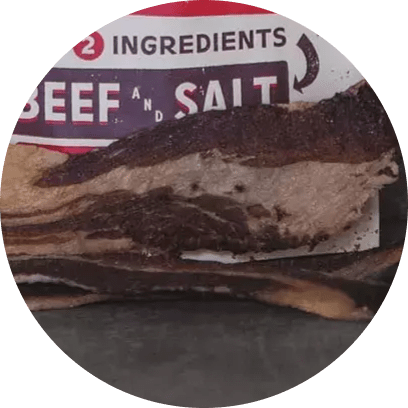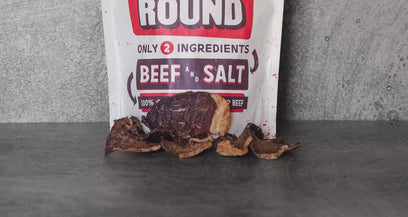THE CARNIVORE DIET BENEFITS




No-till regenerative farming is revolutionizing how we nurture our lands. It’s an approach that actively restores the soil and sets the stage for a healthier, better-tasting crop with less work for the farmer.
But, there’s a growing debate over whether this tactic is actually beneficial or not. We’ll get you up to speed on what exactly no-till farming is and how it works. We’ll look at the benefits and drawbacks to get to the bottom of this topic and help you determine whether you should implement it on your farm!
A Brief Overview of Regenerative Agriculture
First things first - what is regenerative agriculture? More specifically, how does regenerative agriculture work?
This is a holistic approach to farming that goes beyond merely sustaining the current state of the land. It focuses on actively rejuvenating and revitalizing soil health, thereby contributing to the overall well-being of the ecosystem.
This practice is rooted in principles that work in harmony with nature, aiming to rebuild organic soil matter and restore degraded soil biodiversity. The benefits of regenerative farming are multi-faceted, encompassing society as a whole - the consumer, the farmer, and the land are all better off.
One of the main priorities is optimizing regenerative agriculture soil health. This is achieved through practices that increase soil organic matter, leading to more nutrient-rich and structurally sound soil. This enhanced soil health translates to well-documented water benefits of regenerative agriculture, reduced erosion, and improved crop yields.
But, why is regenerative farming important from an environmental standpoint? These practices are known for regenerative agriculture carbon sequestration, thus playing a significant role in preserving and actively restoring our lands.
This approach to farming turns farmlands into valuable carbon sinks by capturing carbon dioxide from the atmosphere and storing it in the soil.
Another key outcome is regenerative agriculture biodiversity. Regenerative farms often see an increase in plant, insect, and microbial diversity, leading to more resilient ecosystems. This biodiversity not only supports agricultural productivity but also benefits the wider environment, including wildlife.
One of the most prominent regenerative farming techniques is minimal soil disturbance, which is where no-till farming comes into play. No-till farming avoids the traditional practice of turning the soil, a process that can disrupt soil structure and microbial life. This technique will be the focus of our conversation today…
What is No Tilling in Regenerative Farming?
No-till farming is a cultivation method where the soil is not disturbed through traditional plowing or tilling. This practice maintains the integrity of the soil structure and preserves its organic content.
Principles of No-Till Farming
The primary principle of no-till farming is to minimize soil disturbance. This approach maintains soil structure, conserves moisture, and protects the rich microbial life essential for a healthy soil ecosystem.
In no-till systems, crop residues are left on the field after harvest. These residues act as a natural mulch, protecting the soil from erosion, retaining moisture, and gradually adding organic matter as they decompose. This is part of what goes into regenerative agriculture fertilizer.
Plus, no-till farming supports a more diverse range of soil organisms by avoiding disruption of the soil. From bacteria and fungi to earthworms and insects, these key players contribute to nutrient cycling and soil health.
Comparison with Traditional Tilling Methods
A better way to understand no-till farming is to compare it to its traditional counterpart. Traditional tilling disrupts soil structure, leading to erosion, nutrient loss, and decreased organic matter. In contrast, no-till farming maintains soil integrity, enhancing its fertility and resilience.
Tilled soil often suffers from reduced water infiltration and increased evaporation, leading to less efficient water use. No-till farming improves water retention, reducing the need for irrigation and protecting against drought.
No-till farming is more effective at sequestering carbon in the soil than traditional methods. Tilling exposes soil organic matter to air, leading to oxidation and release of carbon dioxide, while no-till practices keep carbon locked in the soil.
No-till farmers may initially experience a learning curve and potential short-term yield reductions. However, in the long term, no-till practices often lead to improved yields and reduced costs due to less labor and machinery use, and lower input requirements. Let’s expand on these benefits below.
The Benefits of No-Till Regenerative Farming
No-till regenerative farming offers a multitude of benefits that extend from the soil to the broader environment and agricultural productivity.
Soil Health and Biodiversity
No-till farming helps maintain the integrity of the soil structure. This leads to improved porosity and aggregation, which are essential for root growth and soil organism activity.
The undisturbed soil becomes a thriving hub for beneficial microbes, fungi, and earthworms. This biodiversity is crucial for nutrient cycling, enhancing soil fertility and plant health.
Carbon Sequestration
No-till farming minimizes the release of carbon stored in the soil. This is crucial for reducing greenhouse gas emissions.
The practice enhances the soil's capacity to act as a carbon sink, drawing down carbon from the atmosphere and storing it in the form of organic matter.
Water Conservation and Management
The organic matter and structure in no-till soil improve its ability to hold water, reducing the need for irrigation and making crops more resilient against drought.
The presence of crop residues on the soil surface also decreases water runoff and protects against erosion, preserving water quality in nearby streams and rivers.
Enhanced Crop Resilience and Yield
Healthier soils with diverse microbial life can better support plants in resisting diseases and pests, reducing the need for chemical interventions.
Furthermore, no-till regenerative farming can lead to more consistent and sometimes increased crop yields over time due to improved soil health and reduced stress on plants.
What is Bad About No-Till Farming?
In the interest of transparency, we want to look at both the pros and cons of regenerative agriculture’s no-till approach. While there are a multitude of reasons to implement this tactic, there are some challenges farmers face in doing so.
Initial Transition Difficulties
Transitioning from traditional tilling to no-till can lead to a temporary decrease in soil quality. The soil ecosystem takes time to adjust and rebuild its structure and microbial diversity.
There’s also a bit of a learning curve that farmers must navigate as they implement new techniques and approaches. This adjustment period can be challenging and may temporarily affect yields.
Weed Management Without Tilling
Tilling traditionally helps control weeds by disturbing their growth cycle. Farmers may initially face an increase in weed pressure in no-till systems. This is especially pronounced given chemical weed intervention is typically avoided in regenerative farming.
This necessitates the adoption of alternative weed management strategies, such as cover crops for regenerative farming, mulching, or targeted herbicide use as a worst case scenario.
Adapting Farming Equipment for No-Till Practices
Traditional farming equipment is often unsuitable for no-till practices. Farmers may need to modify existing machinery or invest in new, specialized equipment.
This requirement for new or adapted equipment can represent a significant upfront cost, which may be a barrier, especially for small-scale farmers. That being said, the long-term regenerative farming profits are worth it!
How to Begin Applying the Techniques of No-Till Farming on Your Land
While there are challenges to no-till regenerative farming, the upside dramatically outweighs the potential downside. Making the change is a small price to pay for better yields, healthier working conditions, and the long-term preservation of your land!
That being said, whether you want to learn how to do regenerative agriculture and start your own large-scale operation or try regenerative farming at home with a small plot of land in the backyard, here are the steps to getting started with no-till farming:
- Soil Assessment and Preparation: Begin with a thorough assessment of your soil's health. Conduct soil tests to understand its structure, nutrient content, and microbial activity.
- Adapt or Invest in Equipment: If your existing equipment isn’t suitable for no-till, you may need to modify it or invest in no-till specific equipment like no-till drills and planters.
- Gradual Transition: If your land has been tilled for years, consider a gradual transition to no-till. You might start with a reduced tillage approach and slowly move to full no-till to allow the soil ecosystem time to adapt.
- Managing Residues: Proper management of crop residues is crucial. Ensure residues are evenly distributed across the field to provide uniform coverage and moisture retention. Allow residues to decompose naturally, which will gradually improve soil structure and fertility.
- Weed Control Strategies: Utilize cover crops to suppress weeds naturally. They compete with weeds for resources and can significantly reduce weed pressure. In some cases, mechanical weeding or manual removal may be necessary. Minimize soil disturbance as much as possible.
- Observe Changes: Closely monitor changes in soil health, crop growth, and weed patterns. This observation is key to adapting your practices effectively.
This is obviously a very broad overview of the technique, and we encourage you to invest in formal education before making the transition. But, we hope this conversation on no-till regenerative farming has left you feeling confident and clear in your next steps!
Wrapping Up Our Conversation on No-Till Regenerative Farming
No-till farming has a profound impact on soil health, biodiversity, and sustainability. This approach not only nurtures the land but also sets a foundation for a healthier future in agriculture. Embracing no-till techniques is a step towards more resilient farming, harmonizing with nature's rhythms.
You can learn more about regenerative cattle farming, agroecology vs regenerative agriculture, regenerative grazing, regenerative chicken farming, regenerative dairy farming, permaculture vs regenerative agriculture, and how to support regenerative agriculture in our blog.
Speaking of support following a regenerative agriculture diet is the best way for consumers to do their part in transforming our food supply chain for the better. We have some of the best regenerative agriculture products right here at Carnivore Snax: our meat chips!
These are sourced entirely from regenerative agriculture meat and the only other ingredient is salt. These are a delicious, nutritious snack for those on the carnivore diet vs keto diet, or those simply trying to eat a high-protein diet.
So, put your money where your mouth is and treat yourself to our healthy, tantalizing carnivore chips today!























